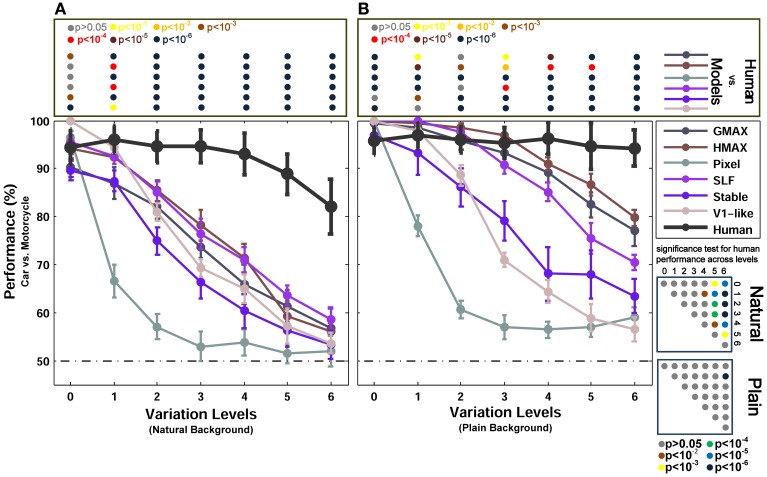Figure 4.
Performances of models and human in two-class (motorcycle/car) invariant object categorization task. (A) Performance comparison when objects were presented on natural backgrounds (performances are the ratio of correct responses). The dashed, horizontal line shows the chance level and each curve represents the performance of a model at different levels of variation, specified with different colors in the right inset. The bold black curve illustrates human performance. The color-coded circle points at the top of each plot, inside the rectangular box, exhibits the p-values for comparisons between human and each model obtained by Wilcoxon signed-rank test (for example the performance of the HMAX model was compared to the human in each level of variation separately. The result of comparison for each model in each level provides us with a p-value. P-values are reported with different colors). The color-coded circle points at the right insets, inside the square boxes, show the p-values for all possible comparisons for human responses in different levels of variation (with plain and natural background). Here, the p-values show whether human categorization performances are significantly different at different levels of variation. For example, we compared the performance of human in Level 0, with Level 1, Level 2, and so on and reported a p-value for each comparison. These comparisons resulted in a symmetric p-value matrix with the size of 7*7 (i.e., 7 levels of variations). (B) Performance comparison when objects were presented on plain backgrounds. In both panels (A,B), the results are the average of 15 independent random runs and the error bars show the standard deviation of the mean.

